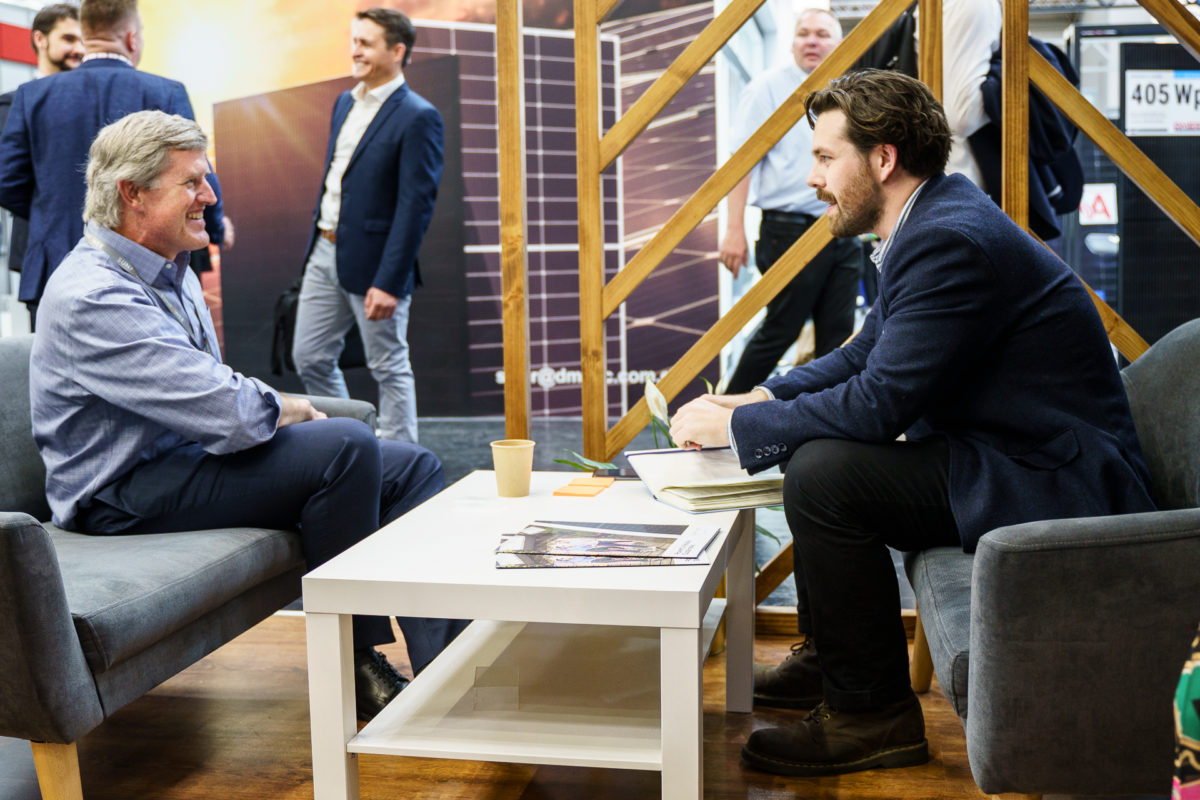pv magazine: This being the first public showing of the new holistic management system, have you received much interest so far?
Mark Babcock: Very good interest. We just announced the product last week and we’re showing it for the first time here. As far as availability is concerned, we’re launching in Australia in Q3 and the first European countries in Q4. And the whole reason behind this is that we have a different channel than everybody else has. In many countries we sell direct to the installer, and even if we do sell through a wholesaler we maintain a relationship with the installer. We have an ‘Advantage Installer Program’ (for dealers who buy through installers) that allows us to communicate directly and we’re quite confident that they’ll be able to sell an integrated solution, one brand, it’s going to have a good appeal to the end consumer.
And why is Australia the launching pad for this solution?
MB: It’s really the fact that certifications are better and faster in Australia compared to anywhere else. And Australia, like every market that does storage, is hungry for product. So, given where availability is on storage, we should get good uptake, people will try it, and then assuming they like it they’ll come back. Especially among our stickier channels (we have a lot of partners who are 50%, 60%, 70% of all of their sales are SunPower products), the reception has been really positive so far.
Sustainability of supply chain is a big talking point here, is that something you’ve also noticed with partners and potential clients during the event?
MB: Absolutely, sustainability is a big talking point with a lot of companies in general, but notably utility-scale developers. I sat down with an Australian developer the other day and we had one of our lawyers with us to answer all the questions about how we document our supply chain and perform our traceability checks, and that’s not only for the US market but for Australia and others too. We really do have a commitment to sustainability, we get certifications from our entire supply chain, we audit them, we do everything to make sure our supply chain is compliant with ensuring no presence of forced labour.
Coming back to Australia, which has had enormous PV penetration for a long time but has now reached a pinch point where people are finally starting to incorporate more pieces to their home systems, such as storage and electric vehicles (EVs). Is this ideal timing for an integrated system offering?
MB: Absolutely. I was in Australia last week doing partner meetings, presenting our solution, and already our partners are telling us that they’re seeing anywhere from 10-30% of new installations going in with battery storage. So, there is certainly interest in Australia, and the interest is two-fold. One is moving energy to the proper time, just as it is in Europe, but also there is the matter of backup capability and reliability, and that’s one of the reasons why we’ve incorporated backup capability as standard. So really in terms of spec and design the product is best suited to the Australian market to start with.
Australians certainly like to know that if the grid fails, they’re not going to get shafted.
MB: Exactly. And in the Australian residential market we see third-party sources that say the market will level out and drift down. But we’re not necessarily convinced because when you look at the penetration rates of EVs in Australia, it is still extremely low. We think that as the EV penetration rate continues to increase, you’re going to have to have more and more solar installations. And if you think about those installations 10-12 years ago, when you could get a kW for free, how many systems are that same old single kW? And how soon will we expect those consumers to be looking for more power, more production capability, and go in with an entirely new system. We think we’re especially well-positioned there due to efficiency and durability and everything else. In general, we see Australia being one of the markets that may well have the renewal of systems before others, simply due to the characteristics of what was put on the roofs 10-12 years ago.
This content is protected by copyright and may not be reused. If you want to cooperate with us and would like to reuse some of our content, please contact: editors@pv-magazine.com.









By submitting this form you agree to pv magazine using your data for the purposes of publishing your comment.
Your personal data will only be disclosed or otherwise transmitted to third parties for the purposes of spam filtering or if this is necessary for technical maintenance of the website. Any other transfer to third parties will not take place unless this is justified on the basis of applicable data protection regulations or if pv magazine is legally obliged to do so.
You may revoke this consent at any time with effect for the future, in which case your personal data will be deleted immediately. Otherwise, your data will be deleted if pv magazine has processed your request or the purpose of data storage is fulfilled.
Further information on data privacy can be found in our Data Protection Policy.